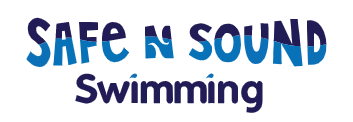
Photo:
Credit: Jeff Dunham, Unsplash
Editor's note: This article was sponsored by Safe N Sound Swimming.
When your child starts swim lessons, you might be surprised at the benefits that appear outside the pool. Local parent Sandra Kimmet started taking her oldest son to a swim class when he was a baby, hoping he would learn to simply tolerate being in the water. “We started for sensory issues. He would scream around water and couldn’t even tolerate a bath.”
At first, the lessons didn’t involve swimming at all, she says. “The first few weeks we actually sat on the side of the pool and he dipped toes in.” But within a few months, he was more than tolerating the water, he was enjoying it, says Kimmet — so much so that he spent his first birthday party playing in a small tub his parents set up to celebrate his remarkable progress.
Admittedly, swim lessons are a lot of work for parents (all that laundry!). But swimming is a low-impact, high-reward sport that kids can practice for life. It might even help them live longer; according to a recent study, swim lessons lower the risk of early death by 28 percent. Another recent study found that in addition to building physical skills, swim lessons benefit kids’ cognitive and social development.
That doesn’t surprise Brittany Peshoff, an occupational therapist with Seattle Therapy Network. She works with children in the warm, 88-degree pool at Safe N Sound Swimming in Seattle’s Lake Union neighborhood. “I reached out to them because they do great work with kids, and they were right down the street. They’ve been beyond wonderful in helping me create this collaborative workspace.”
For Peshoff, working with kids in the pool is more about developing life skills than swim skills. “I am making goals that are specific to helping a child reach milestones and participate in daily living with skills such as dressing, showering, motor planning and postural strength.” Here are some other real-life benefits your child might pick up in the pool.
Motor planning
Working in the water helps develop proprioception (also referred to as kinaesthesia or kinesthesia), a sense of body position and movement. “Proprioception is basically your sense of your joints, your limbs and where you are in space,” says Peshoff. “Working in the water targets this in an amazing way.” Moving in the pool requires pushing against the water’s constant hydrostatic pressure, which fires up proprioceptors throughout the body and helps develop motor planning, the ability to coordinate body movements.
Attention and focus
Hydrostatic pressure is calming and regulating for children, particularly those with neurological differences such as ADHD. In many cases, the benefits are immediate. “Water is such a calming, regulating environment, and can improve attention, focus and overall wellbeing for hours afterward,” says Peshoff. “I have one student whose teachers tell me that they notice a huge difference on the days we meet — they save all of his hard, focused work for those days!”
Social skills
When kids feel comfortable in and around the water, they’ll have more social opportunities, from pool parties to splash-park playdates to kayak and paddleboard adventures. More confidence in the pool can translate into more confidence on the playground, says Peshoff. “When kids have better motor skills, social anxiety decreases, and social skills and self-confidence grow. Success in swimming can lead to success in soccer, success on the playground and success in other sports.”
Speech development
Because swimming requires children to focus on closing their mouth underwater, it can benefit speech and even eating and feeding problems, says Peshoff. “Swimming brings more attention, focus and awareness to the mouth. In the pool, we work on breath control, but this also helps with lip control and the ability to close your lips and make a seal, which is an important developmental milestone.”
Sensory inputs
Swim instruction is highly beneficial for children who struggle with sensory inputs like sound and texture, says Peshoff. “Sometimes it’s just about getting a child to tolerate the trickle of a shower or the sensation of water on their face, but there are some unexpected benefits, like getting used to the feeling and texture of wet clothing, towels and even goggles.”
Self-care
Parents are often surprised and delighted when their child shows unexpected gains in self-care, says Peshoff. Called activities of daily living, or ADLs, activities like bathing and dressing can be daily struggles for children with neurological or developmental differences.
Because regular swimming lessons involve lots of changing into and out of clothing, showering and hair washing, they naturally build these vital skills, which often removes a tremendous amount of stress from the family’s daily life, says Peshoff. “Swimming is a great way to build these skills in a safe, fun, motivating way.”
|
Sponsored by: |

|











